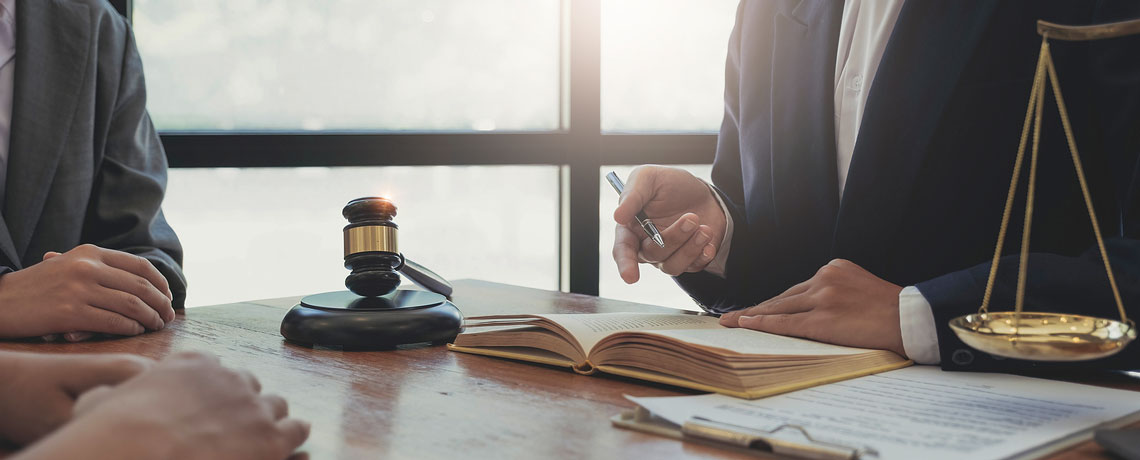Who is eligible for subchapter V bankruptcy?
Business entities including C-Corporations, S-Corporations, Limited Liability Corporations (“LLCs), and Limited Liability Partnerships (LLPs) are eligible for subchapter V bankruptcy as well as individuals. The business or individual must have less than $7.5 million in combined secured and unsecured debt and 50 percent or more of the debt must arise from the commercial or business activities of the debtor. Note that while the debt ceiling is currently $7.5 million, it will revert down to the original debt limit of $2,725,625 on June 21, 2024 unless Congress acts to extend the higher debt limit beyond that debt.
Corporations and individuals typically file subchapter V bankruptcy with the plan of emerging from bankruptcy with less debt and lower monthly expenses but sometimes file bankruptcy for the purpose of liquidating some or all of their assets free and clear of liens through the bankruptcy process which are often referred to as 363 sales.
How does a subchapter V bankruptcy work for corporations or individuals?
Subchapter V of Chapter 11 of the Bankruptcy Code (often referred to as “sub V bankruptcy” case) is a type of bankruptcy for either corporations or individuals that allows business entities or individuals to repay some or all of their debts over an extended period of time, often with very little interest. It took effect in February of 2020 and creates a more streamlined and less expensive reorganization process for those that qualify as compared to a normal Chapter 11 or Small Business Chapter 11 case. It also includes some key differences between a normal Chapter 11 case, which can provide the Debtor with leverage, making it easier to obtain confirmation of the Debtor’s Plan of Reorganization over the objection of creditors. Individuals or businesses must set forth a plan of reorganization which is reviewed by the Court and then voted on by creditors for approval.
It can be used to become current on missed mortgage payments, commercial lease payments, and various types of taxes including payroll taxes, excise taxes, and property taxes, while simultaneously eliminating unsecured debt. It can also permanently modify and stretch out secured claims over time which could reduce monthly payments and the total interest paid.
Many famous corporations have successfully reorganized under Chapter 11 Bankruptcy including the Los Angeles Dodgers, Chrysler LLC, and General Motors Corporation.

What are some of the major differences between a subchapter V bankruptcy and a normal Chapter 11 Bankruptcy?
In a regular Chapter 11 case, an unsecured creditor committee may be appointed by the Office of the US Trustee which acts for the benefit of unsecured creditors. However, the Debtor must pay for the fees of the Unsecured Creditor Committee’s counsel as an administrative Priority claim which can be very expensive. Under Subchapter V, no Committee is appointed unless the Court orders otherwise.
The Debtor must file a Chapter 11 Plan within 90 days from the date that the case is filed, unless the Court extends this deadline. This means a Debtor should have a very clear exit strategy ready to be executed before filing.
Unlike in a normal Chapter 11 case, the Debtor does not need to file a lengthy disclosure statement along with a Plan, unless otherwise ordered by the Court. However, even though no Disclosure Statement is required, the Debtor’s Plan must include: 1) a brief history of the business operations of the Debtor; (2) a liquidation analysis; and (3) projections with respect to the ability of the debtor to make payments under the proposed Plan.
Elimination of the Disclosure Statement requirement can substantially reduce fees in a Chapter 11 case as well as allow for a faster plan confirmation process.
A Sub V Debtor does not need to pay quarterly fees to the Office of The US Trustee based on its quarterly expenditures. In a normal Chapter 11 case, Debtors typically need to pay the Office of the U.S. Trustee anywhere from $325.00 to $4,875.00 or more, per quarter depending on how much the Debtor spends per quarter.
At the outset of the case, the Office of the Trustee will appoint a Sub V Trustee. One of the Sub V Trustee’s primary duties is to attempt to facilitate a consensual plan of reorganization between the Debtor and creditors, when possible, which can often lead to a higher rate of success for Debtors. The Sub V Trustee can act as a mediator between the Debtor and creditors and assist the parties in achieving the common goal of making sure that the Debtor’s Plan can be confirmed, so that creditors can ultimately get paid.
The Debtor does not need to have an impaired class of creditors vote in favor of the Plan or to have all of its impaired classes accept the Plan under a nonconsensual plan confirmation process called a cramdown.
If the Debtor is attempting a Cramdown Confirmation, meaning there is some objecting creditor, the Debtor will typically need to provide unsecured creditors all of its projected disposable income for a period of 3 to 5 years.
The Absolute Priority Rule is eliminated in under a Cramdown Confirmation, which means that the Debtor may maintain its own Property under its Plan even if unsecured creditors are not being paid in full. From a practical perspective, this eliminates a powerful objection that unsecured creditors typically have in a normal Chapter 11.
What are some of the major benefits of a Sub V bankruptcy?
Major benefits of Chapter 11 Subchapter V bankruptcy:
- There is typically not a five year restriction on the repayment of debt as in Chapter 13 bankruptcy for individuals.
- It can be used to reject contracts such as long term commercial leases with minimized penalties.
- It can be used to reduce the interest rate of loans or lines of credit such as secured equipment loans or loans on accounts receivables to a current market rate of interest.
- It can be used to reduce or “cram down” mortgages to their current fair market value of parcels of real property and repay that fair market value over a new extended repayment period such as 30 to 40 years.
- It can be used to reduce or “cram down” other secured property such as secured equipment loans to the current fair market value of the collateral and repay that fair market value over a new extended repayment period that could substantially reduce the monthly payments on the loan.
- It can be used to avoid junior mortgages on or real estate where the value of the piece of property is worth less than the first trust deed on the property.
- It can used to cure or reduce nearly all types of tax debt including payroll taxes, excise taxes, and property taxes.
- It can be used to substantially reduce most forms of unsecured debt including trade debt and credit card debt.
- It can be used to stop a foreclosure sale.
- It can be used to cure mortgage arrears, or missed lease payments.
- It can be used to remove judgment liens.
- It can be used to stop all forms of collection activity including the levying of bank accounts, recording involuntary liens, and pending state court litigation.
- It is often less expensive than a normal Small Business Chapter 11 Case or regular Chapter 11 case
- It may provide greater leverage over creditors than a standard Chapter 11 Case

Who is a good candidate for Chapter 11 Subchapter V Bankruptcy?
A business or individual may be a good candidate for Subchapter V bankruptcy if:
- A business or individual intends to reorganize and does not wish to liquidate under Chapter 7 bankruptcy.
- A business or individual has less than $7.5 million in combined secured and unsecured debt and 50 percent or more of the debt arises from the commercial or business activities of the debtor.
- An individual has too much debt to be a in a Chapter 13 bankruptcy, but otherwise qualify for Subchapter V because the majority of your debt arises from Commercial or business activities.
- A business or individual has the ability to become profitable but needs to shed excess debt such as commercial lease agreements or unsecured debt.
- A business or individual owns one or more parcels of rental property that are worth less than their fair market value and wishes to cram down the properties to their current fair market value to be repaid over a new extended repayment period such as 30 to 40 years to make them profitable again.
- A business or individual has one or more junior liens on its properties and the properties are worth less than the first lien on the properties.
- A business or individual has a pending foreclosure sale on one or more of its commercial or rental properties and wishes to stop the sale and either cure the mortgage arrears or, in some cases, eliminate the mortgage arrears by rewriting the terms of the underlying loan securing the property.
- A business or individual has a lot of unsecured debt that continues to accumulate high amounts of interest.
- A business or individual has the ability to become profitable but needs time to cure or reduce tax debt such as payroll taxes, excise taxes, and property taxes.
How do I know if Subchapter V Bankruptcy is right for my company or myself?
Although Subchapter V bankruptcy is a very powerful tool, it is not always the best choice for all businesses or individuals facing financial problems. Speak with a Los Angeles Bankruptcy attorney today to determine if filing for Subchapter V bankruptcy is the right option for you or your company.

Free Consultations Available Now



